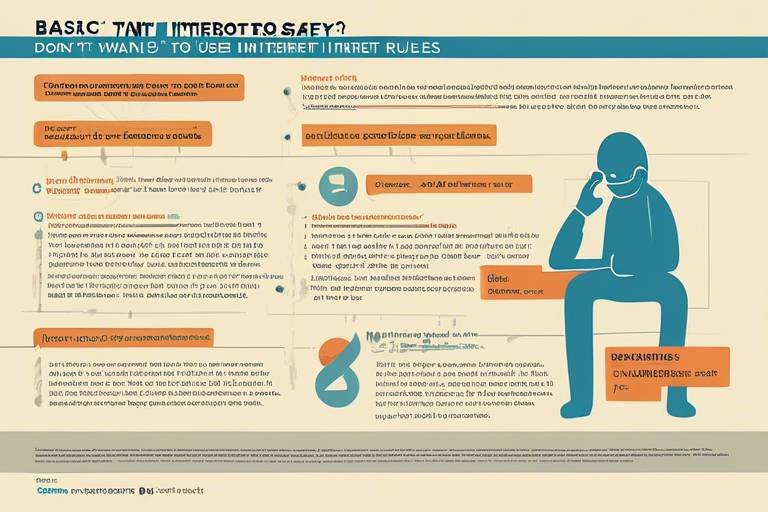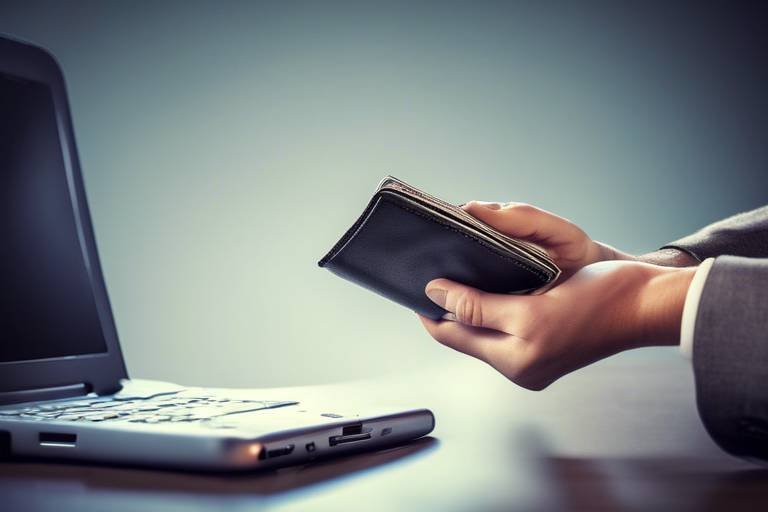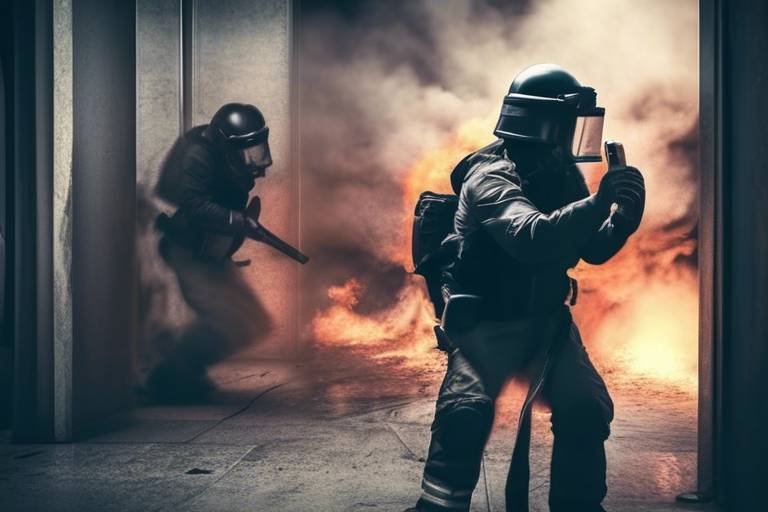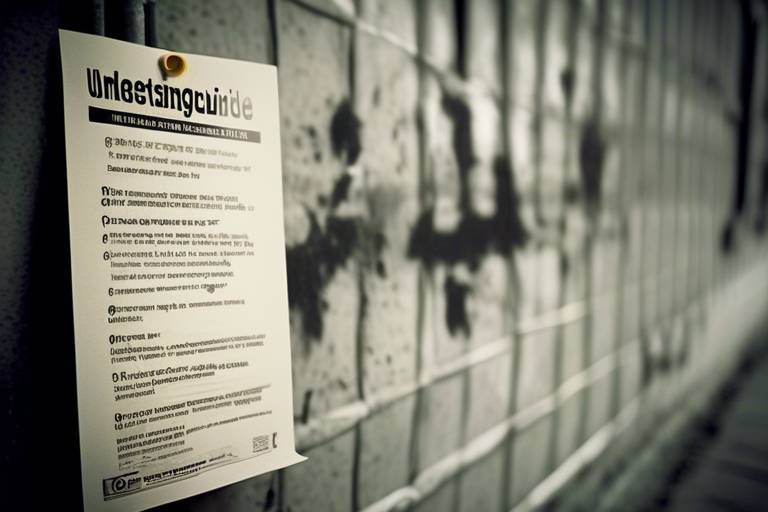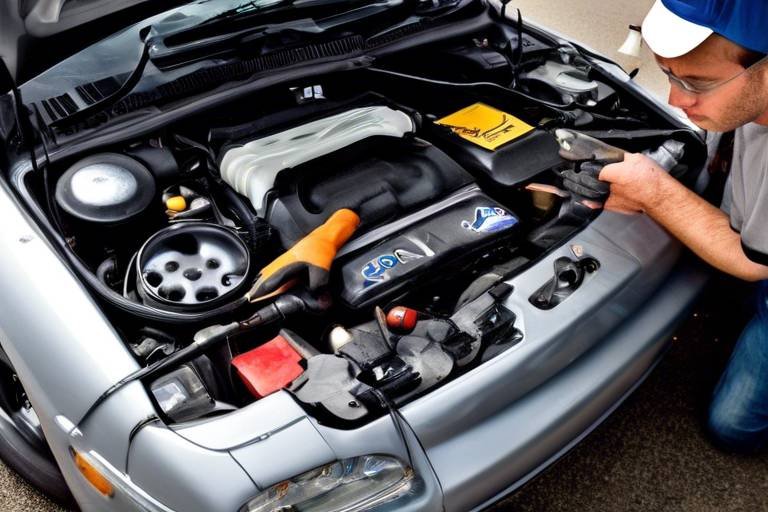Safety Tips for Public Places
In today’s bustling world, navigating public spaces like parks, malls, and public transportation can be both exciting and daunting. Whether you're out shopping, catching a bus, or enjoying a day at the park, it’s essential to prioritize your safety and the safety of those around you. This article provides essential safety tips that can help you stay vigilant and prepared in any public setting. Think of these tips as your personal safety toolkit—ready to equip you with the knowledge and awareness you need to enjoy your outings without unnecessary worry.
Staying aware of your surroundings is crucial for personal safety in public places. Imagine walking through a busy mall; your senses should be tuned in to the people around you, the sounds, and even the smells. Techniques to enhance situational awareness include:
- Regularly scanning your environment: Take a moment to glance around, observing who is near you and what they are doing.
- Avoiding distractions: Keep your phone in your pocket when walking through crowded areas to stay alert.
- Trusting your instincts: If something feels off, it probably is. Don’t hesitate to move to a safer spot.
By practicing these techniques, you can recognize potential threats before they escalate, ensuring a safer experience in public spaces.
Having emergency contact information readily available can be lifesaving. Think about it: if something goes wrong, who would you call? It's wise to have a list of important numbers stored on your phone or written down in your wallet. Make sure to include:
- Family members
- Close friends
- Your doctor or medical professional
- Local emergency services
Additionally, consider sharing this information with trusted individuals, so they can act swiftly if needed. It’s like having a safety net—always there when you need it!
Utilizing personal safety devices can provide peace of mind. Think of them as your invisible shield in potentially dangerous situations. Devices such as pepper spray, personal alarms, or even a whistle can deter threats and attract attention when needed. When choosing a personal safety device, consider:
- Ease of use: Make sure you can operate it quickly.
- Portability: It should easily fit in your bag or pocket.
- Local laws: Ensure that the device is legal to carry in your area.
By being prepared with the right tools, you can feel more secure during your outings.
Traveling with others can enhance safety in public spaces. There's strength in numbers! When you're out with friends or family, you naturally look out for each other. Plus, it’s more fun! Here are some strategies for group travel:
- Stay connected: Use group messaging apps to keep everyone informed.
- Set meeting points: If you get separated, know where to regroup.
- Watch each other’s belongings: Keep an eye on bags and valuables.
By sticking together, you create a supportive environment that can help deter potential threats.
Using public transportation requires specific precautions. Whether you're on a bus, train, or subway, safety should always come first. Here are some tips to keep in mind:
- Stay alert: Keep an eye on your surroundings and avoid getting lost in your phone.
- Keep your belongings close: Use a secure bag that you can hold or wear in front of you.
- Know your route: Familiarize yourself with the stops and schedule to avoid looking lost.
By following these tips, you can navigate public transportation with confidence and ease.
Keeping your belongings secure is vital in crowded areas. Imagine the chaos of a busy market; it's easy for a thief to slip away with your wallet or phone. To safeguard your valuables, consider:
- Using anti-theft bags: These often come with locks and cut-resistant straps.
- Being mindful of your pockets: Keep wallets in front pockets and avoid back pockets.
- Staying aware of your surroundings: If someone seems too close for comfort, trust your gut and move.
By taking these precautions, you can minimize the risk of theft and focus on enjoying your day.
Knowing where to find safe spaces can be critical in emergencies. When you enter a new public area, take a moment to identify places like:
- Security offices
- Emergency exits
- Well-lit areas with lots of people
These locations can provide refuge if you ever feel threatened or need assistance. Having a plan can make all the difference in a stressful situation.
Remaining calm during emergencies can help you make better decisions. Picture this: you’re in a crowded area, and suddenly, there’s a commotion. Your heart races, and panic sets in. Instead of succumbing to fear, practice techniques to manage stress:
- Take deep breaths: Inhale deeply through your nose and exhale slowly.
- Focus on your surroundings: Ground yourself by observing details around you.
- Have a plan: Knowing what to do in various scenarios can ease anxiety.
By staying calm, you can think clearly and take appropriate action when it matters most.
Understanding how to report suspicious behavior is essential for community safety. If you see something that doesn't seem right, don't hesitate to alert authorities. Here’s how to do it:
- Gather details: Note descriptions of people, vehicles, and behaviors.
- Contact local law enforcement: Use emergency services or non-emergency numbers.
- Stay safe: If possible, maintain a safe distance while observing.
Reporting suspicious activity can help keep your community safe and deter criminal behavior.
Q: What should I do if I feel unsafe in a public place?
A: Trust your instincts. If you feel uncomfortable, move to a crowded area or seek help from security personnel.
Q: Are personal safety devices legal everywhere?
A: Laws vary by location. Always check local regulations regarding the possession and use of personal safety devices.
Q: How can I improve my situational awareness?
A: Practice being mindful of your surroundings. Avoid distractions, and make it a habit to regularly scan your environment.
Q: What should I do in case of an emergency on public transportation?
A: Stay calm, alert the driver or conductor, and follow their instructions. If necessary, use emergency exits.

Awareness of Surroundings
This article provides essential safety tips to consider when navigating public spaces, ensuring your well-being and that of others while enjoying various environments such as parks, malls, and public transportation.
Staying aware of your surroundings is crucial for personal safety in public places. Think of it as being the main character in your own action movie; you need to be alert, ready to react, and aware of every twist and turn that comes your way. This heightened sense of awareness can be your best defense against potential threats. So, how do you sharpen this skill? Here are a few techniques:
- Engage Your Senses: Use all your senses to gather information about your environment. Listen for unusual sounds, watch people's movements, and even pay attention to smells. This multi-sensory approach can help you pick up on cues that something is off.
- Scan Your Environment: Make it a habit to scan your surroundings regularly. This means looking for exits, potential hazards, and anything or anyone that seems out of place. Think of it like a security guard doing rounds; you need to be vigilant.
- Trust Your Instincts: If something feels wrong, it probably is. Your instincts are like an internal alarm system that can alert you to danger before your mind even processes it. Don't ignore that gut feeling.
Additionally, it’s beneficial to familiarize yourself with common safety signs and signals in public spaces. For instance, knowing where emergency exits are located or recognizing security personnel can significantly enhance your peace of mind. Imagine walking into a mall; instead of just heading straight to the stores, take a moment to locate the nearest exits and security stations. This simple act could make all the difference in an emergency.
Moreover, practicing situational awareness can also involve being mindful of your personal space and the behavior of those around you. For example, if someone is getting too close for comfort or acting suspiciously, it's okay to change your route or seek assistance. Remember, being aware doesn’t mean being paranoid; it’s about being prepared and proactive.
In summary, enhancing your awareness of surroundings is not just about keeping your eyes peeled; it’s about developing a mindset that prioritizes safety. By actively engaging with your environment and trusting your instincts, you can significantly improve your ability to navigate public spaces safely.
Having emergency contact information readily available can be lifesaving. Here, we outline how to store important numbers and share them with trusted individuals.
Utilizing personal safety devices can provide peace of mind. This section covers various tools, such as pepper spray and personal alarms, and their effective usage.
Traveling with others can enhance safety in public spaces. This part emphasizes the benefits of group travel and strategies for staying connected.
Using public transportation requires specific precautions. Here, we discuss tips for staying safe while commuting on buses, trains, and subways.
Keeping your belongings secure is vital in crowded areas. This section offers advice on safeguarding bags, wallets, and other valuables from theft.
Knowing where to find safe spaces can be critical in emergencies. This part highlights how to identify safe areas in various public settings.
Remaining calm during emergencies can help you make better decisions. This section provides techniques for managing stress and anxiety in crisis situations.
Understanding how to report suspicious behavior is essential for community safety. Here, we explain the process and importance of alerting authorities when necessary.
Q: What should I do if I feel unsafe in a public space?
A: Trust your instincts. If you feel uncomfortable, find a safe place or seek assistance from security personnel or law enforcement.
Q: How can I improve my situational awareness?
A: Regularly practice scanning your environment, engage your senses, and stay informed about your surroundings.
Q: What personal safety devices are recommended?
A: Consider carrying items like pepper spray, personal alarms, or even a whistle to draw attention if needed.
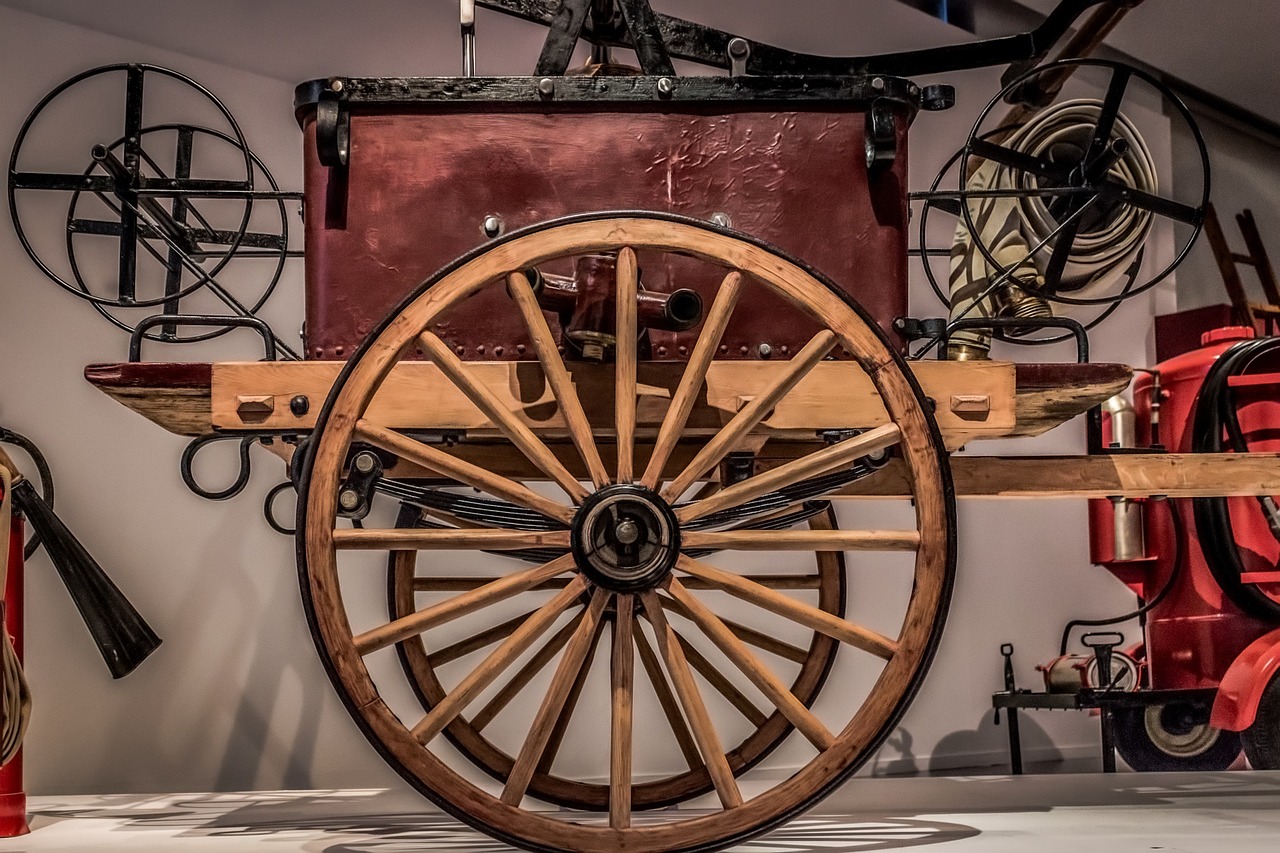
Emergency Contact Information
In today's fast-paced world, having at your fingertips can be a game-changer. Imagine being in a crowded mall or a bustling park, and something unexpected happens. Would you be able to quickly reach out for help? This is where being prepared becomes essential. Start by compiling a list of important contacts, including family members, friends, and local emergency services. Keep this information easily accessible, whether it's on your phone, in your wallet, or even on a small card in your bag.
One effective way to manage your emergency contacts is to create a dedicated contact group in your phone. Label it clearly, such as "Emergency Contacts," so you can find it quickly in a crisis. It’s also wise to include medical information like allergies or chronic conditions, which can be vital for first responders. You can use the notes section of your phone or a specialized app to store this information securely.
Consider sharing your emergency contact details with trusted friends or family members. For instance, if you're going out for a night on the town, let someone know where you're headed and who you're with. This simple act can provide peace of mind for both you and your loved ones. In addition, if you're traveling, take a moment to write down the contact information for your hotel or local embassy, especially if you're abroad. This could prove invaluable in case you find yourself in a tight spot.
To further enhance your preparedness, you might want to create a small emergency contact card. This card can include:
| Contact Name | Relationship | Phone Number | Address |
|---|---|---|---|
| John Doe | Brother | (123) 456-7890 | 123 Main St, Anytown |
| Jane Smith | Friend | (987) 654-3210 | 456 Elm St, Othertown |
| Local Police | N/A | 911 | N/A |
Having this information readily available can save precious time during emergencies. Remember, it’s not just about having the numbers; it’s about knowing how to use them effectively. Practice scenarios in your mind: what would you do if you lost your phone or if you were in a situation where you couldn't make a call? Being mentally prepared can be just as crucial as having the right information.
Finally, ensure that your emergency contacts are aware that they are on your list. This way, they can be prepared to help if you reach out. It’s like having a safety net; it might not be visible, but knowing it’s there can make all the difference. So, take a few moments today to review and update your emergency contact information. You never know when it might come in handy!

Personal Safety Devices
In today's world, where unpredictability seems to lurk around every corner, have become an essential part of our daily lives. These handy tools can provide a sense of security, making us feel more empowered when we're out and about. Whether you're strolling through a bustling mall, waiting for public transportation, or simply enjoying a day at the park, having the right safety device can make all the difference. But what exactly are these devices, and how can they help you?
First and foremost, let's talk about pepper spray. This small canister is a powerhouse when it comes to self-defense. A quick spray can incapacitate an attacker, giving you precious seconds to escape and seek help. It's compact enough to fit in your purse or pocket, making it a convenient option for anyone looking to enhance their personal safety. However, it's crucial to familiarize yourself with local laws regarding its use, as regulations can vary significantly from one place to another.
Another fantastic option is the personal alarm. Imagine walking alone at night when suddenly, you hear footsteps behind you. A personal alarm can be a lifesaver in such scenarios. These devices emit a loud sound that can startle an attacker and attract attention from those nearby. Some models even come equipped with a flashlight, which can be handy in dark areas. The beauty of a personal alarm lies in its simplicity; just pull the pin or press a button, and you’re instantly creating a scene that can deter any potential threat.
Additionally, consider investing in a self-defense keychain. These aren’t just ordinary keychains; they can be designed with various tools that can aid in self-defense. Some may feature a pointed end that can be used to strike an attacker, while others might include a small knife or a tactical pen. The best part? They blend seamlessly with your keys, so they’re always within reach without drawing unnecessary attention.
Now, you might be wondering, "How do I choose the right personal safety device for me?" It really depends on your lifestyle and comfort level. Here are a few questions to consider:
- What situations do I find myself in most often?
- Am I comfortable using a device that requires some training?
- How portable do I need this device to be?
By answering these questions, you'll be better equipped to select a device that not only fits your needs but also gives you the confidence to navigate public spaces safely. Remember, it's not just about having a device; it's about knowing how to use it effectively. Consider taking a self-defense class to familiarize yourself with the tools you choose. Knowledge and preparation can be your best allies in ensuring your safety.
Ultimately, personal safety devices are about empowerment. They serve as a reminder that you have the means to protect yourself and that you are not helpless in the face of danger. So, whether you opt for pepper spray, a personal alarm, or a self-defense keychain, make sure you carry it with you and know how to use it. Your safety is worth it!
1. Are personal safety devices legal everywhere?
While many personal safety devices are legal in most areas, laws can vary significantly. Always check local regulations before purchasing or carrying a device like pepper spray.
2. How effective are personal alarms?
Personal alarms can be highly effective in deterring potential attackers by attracting attention. The loud noise they produce can startle an assailant and alert those nearby.
3. Do I need training to use these devices?
While some devices, like pepper spray, may benefit from training, others, like personal alarms, are straightforward to use. It's always a good idea to familiarize yourself with your chosen device.
4. Can I carry multiple personal safety devices?
Absolutely! Carrying more than one device can enhance your safety. Just ensure that you can access them easily when needed.

Traveling in Groups
Traveling in groups is not just a fun way to explore new places; it’s also a powerful strategy for enhancing your safety in public spaces. Think about it: when you’re surrounded by friends or family, there’s a natural sense of security that comes with that camaraderie. You’re not just another face in the crowd; you’re part of a unit, a team that looks out for one another. This collective awareness can significantly reduce your chances of becoming a target for unwanted attention or potential threats.
One of the key benefits of group travel is the ability to stay connected. Whether you’re wandering through a bustling market or navigating a crowded subway station, having a buddy system in place can be a game changer. For instance, designate a meeting point in case anyone gets separated. This could be a specific store, a landmark, or even a café. The idea is to have a plan that everyone is aware of, ensuring that even if things go awry, you can regroup quickly and safely.
Moreover, traveling in groups allows for shared responsibilities. If one person is preoccupied with taking photos or checking directions, others can keep an eye on the surroundings. This shared vigilance not only enhances safety but also fosters a sense of community among travelers. You can take turns being the lookout, which can make the experience more enjoyable and less stressful.
In addition, there’s strength in numbers. When you walk together, you naturally project confidence and assertiveness, which can deter potential threats. It’s like a pack of wolves; they’re less likely to be approached by predators because they present a united front. Similarly, when you’re in a group, you’re less likely to be targeted by those with ill intentions.
However, it’s essential to remain aware of your surroundings, even in a group. Having fun and enjoying each other’s company is important, but don’t let your guard down completely. Keep your conversations at a reasonable volume, be mindful of your belongings, and avoid drawing unnecessary attention to yourselves. Always be prepared to react if something feels off. Remember, safety is a shared responsibility.
In conclusion, traveling in groups can significantly enhance your safety in public spaces. It allows for shared vigilance, promotes a sense of community, and provides a buffer against potential threats. So, next time you plan an outing, consider gathering a few friends or family members to join you. Not only will you have more fun, but you’ll also be taking a proactive step towards ensuring your safety and well-being.
- What should I do if I get separated from my group?
It's best to have a predetermined meeting spot. If you can’t find your group, stay where you are and try to contact them via phone. - How can I ensure my group stays connected in crowded areas?
Use walkie-talkies or mobile messaging apps to communicate. Establish a system to check in with each other regularly. - What if someone in the group feels uncomfortable?
Encourage open communication. If someone feels uneasy, discuss it as a group and decide on the best course of action.
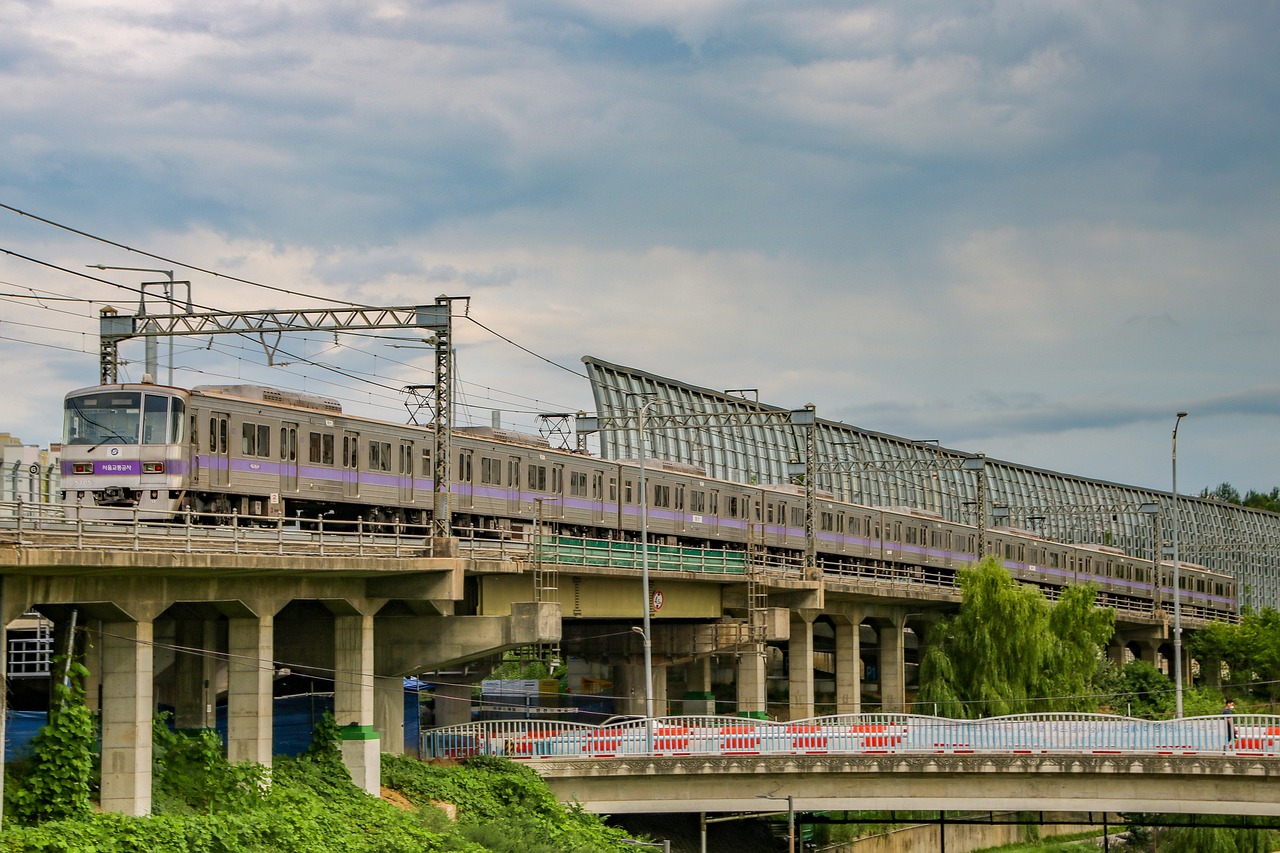
Public Transportation Safety
Using public transportation can be a convenient and cost-effective way to navigate through a city, but it also comes with its own set of safety challenges. Whether you're hopping on a bus, riding the subway, or taking a train, it's essential to remain vigilant and take proactive measures to ensure your safety. Think of public transportation like a bustling marketplace—there are countless interactions happening at once, and while many of them are positive, there can also be hidden dangers lurking in the crowd.
First and foremost, stay aware of your surroundings. When boarding a bus or train, take a moment to scan the area. Are there any individuals acting suspiciously? Is there a clear path to an exit? These observations can make all the difference. It's easy to get lost in your phone or a book while commuting, but keeping your head up can help you spot potential threats before they escalate.
Moreover, consider your belongings. Keep your bag close and secure—preferably zipped and held in front of you rather than slung over your shoulder. It’s also wise to avoid placing valuables, such as your wallet or phone, in easily accessible pockets. If you're traveling during peak hours, the last thing you want is to become a target for pickpockets. If you have to place your bag down, make sure it’s attached to you in some way, like using a strap that wraps around your leg.
Another critical aspect of public transportation safety is knowing your route. Familiarize yourself with the stops and the general layout of the transit system. This knowledge not only helps you feel more confident but also allows you to quickly identify safe areas or exits in case of an emergency. If you’re unsure, don’t hesitate to ask transit staff or fellow passengers for assistance. Most people are willing to help, and it’s a great way to build a sense of community.
When it comes to waiting for your ride, choose well-lit and populated areas. If you’re waiting for a bus late at night, stand near other people rather than isolated spots. There’s safety in numbers, and being around others can deter unwanted attention. If you notice someone who seems to be harassing you or making you uncomfortable, don’t hesitate to alert the driver or transit authorities. They are trained to handle such situations and can provide assistance.
Lastly, always have a plan for emergencies. Familiarize yourself with the emergency procedures of the transit system you're using. Many systems have emergency buttons or intercoms for reporting issues. Knowing how to access help can make a world of difference in a crisis. If you feel threatened or unsafe, trust your instincts and take action—whether that means moving to a different car, getting off at the next stop, or contacting authorities.
In summary, public transportation can be a safe and enjoyable way to travel when you take the right precautions. By staying aware of your surroundings, securing your belongings, knowing your route, and being prepared for emergencies, you can navigate the urban jungle with confidence and ease. Remember, safety is not just about avoiding danger; it's about being proactive and making smart choices that enhance your overall travel experience.
- What should I do if I feel unsafe on public transportation?
If you feel unsafe, trust your instincts. Move to a different area, alert the driver, or get off at the next stop if necessary. - How can I protect my belongings?
Keep your bag zipped and close to you, and avoid placing valuables in easily accessible pockets. - Is it safe to use public transportation at night?
While many people use public transport at night, it’s essential to stay in well-lit and populated areas and travel with others whenever possible.
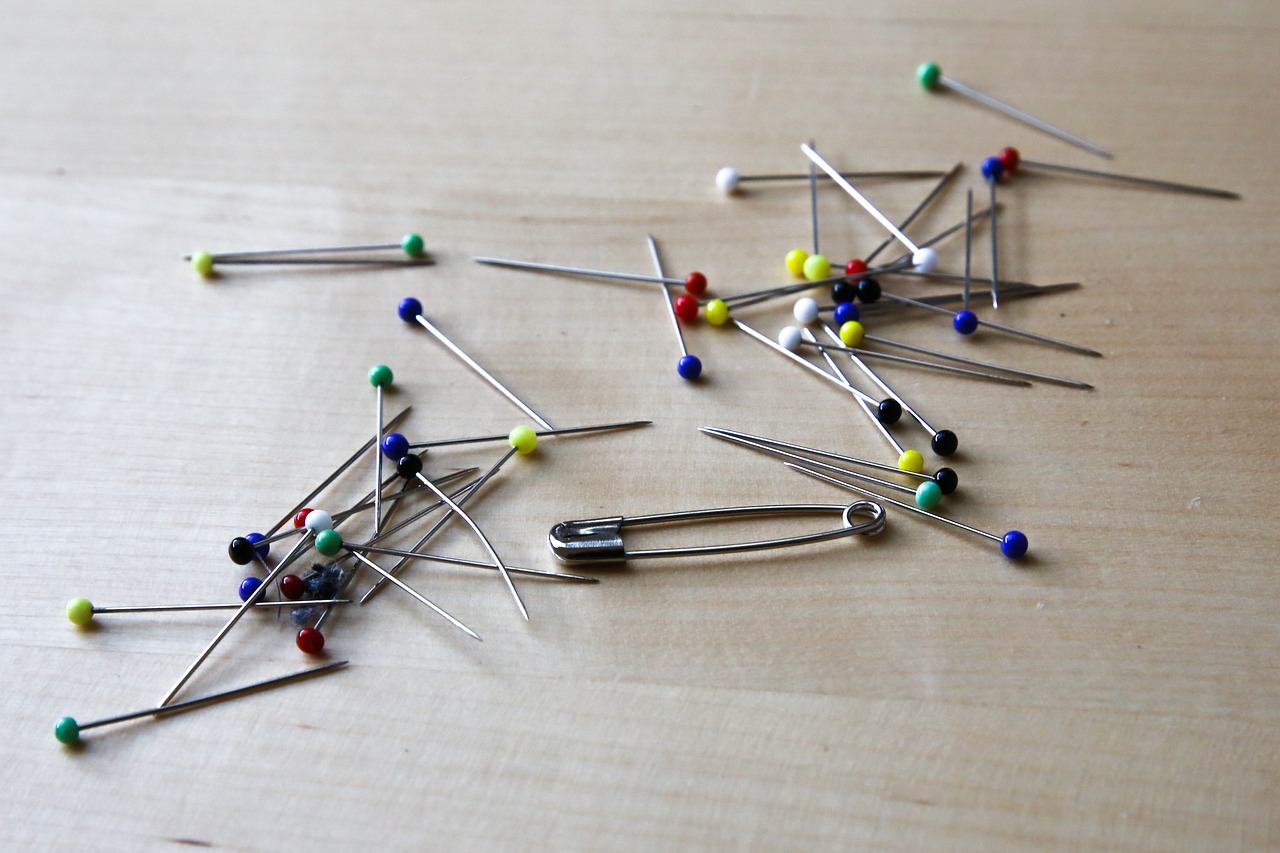
Securing Personal Belongings
When you're out and about in bustling public spaces, securing your personal belongings should be at the forefront of your mind. Imagine walking through a crowded mall or navigating a busy park; the last thing you want is to be distracted by the fear of losing your valuables. It's all too easy to get caught up in the excitement of your surroundings, but taking a few simple precautions can make all the difference in ensuring your belongings stay safe.
First and foremost, always keep your bags and wallets close to you. Consider using a crossbody bag or a money belt that can be hidden under your clothing. This way, you can minimize the risk of someone easily snatching your bag while you're distracted. Additionally, when you sit down—whether at a café or on a park bench—make sure your belongings are securely placed against your body or on your lap. Leaving your bag on the ground or hanging off a chair is like inviting trouble!
Another effective strategy is to be mindful of your surroundings. If you notice someone lingering too close to you, or if a crowded area suddenly feels too chaotic, it might be time to reassess your situation. Trust your instincts! If something feels off, it probably is. And remember, it’s not just about keeping your belongings safe; it's also about maintaining your peace of mind.
In addition to being vigilant, consider using anti-theft devices for added security. Many bags now come equipped with features like lockable zippers, cut-resistant straps, and RFID-blocking compartments. These small but mighty additions can deter pickpockets and protect your sensitive information from electronic theft. Investing in a quality bag with these features can be a game-changer.
When it comes to your wallet, consider using a chain wallet or a travel wallet that can be attached to your clothing. This not only keeps your cash and cards secure but also makes it harder for anyone to discreetly lift it from your pocket. You might think it looks a bit old-school, but trust me, it’s a practical choice that could save you from a world of hassle.
Lastly, always have a plan in case something does go missing. Keep a list of your important belongings, including serial numbers for electronics, and take photos of valuable items. This information can be invaluable if you need to report theft to the authorities or your insurance company. Remember, being prepared is half the battle!
In summary, securing your personal belongings while navigating public spaces is all about being proactive and aware. By keeping your items close, using anti-theft devices, and trusting your instincts, you can enjoy your time out without the nagging worry of theft. After all, the world is full of wonders waiting to be explored—don’t let the fear of losing your belongings hold you back!
1. What should I do if my belongings are stolen in a public place?
If your belongings are stolen, immediately report the theft to local authorities. Provide them with as much information as possible, including descriptions of the items, any serial numbers, and details about the incident.
2. How can I protect my phone from theft in public?
Always keep your phone in a secure pocket or bag. Consider using a phone case with a wrist strap or a secure pouch. Be cautious when using your phone in crowded areas, as it can attract unwanted attention.
3. Are there specific bags that are better for travel?
Yes! Look for bags with anti-theft features such as lockable zippers, cut-resistant straps, and RFID-blocking technology. Brands that specialize in travel gear often have designs focused on security.
4. How can I make sure my belongings are safe while using public transportation?
Keep your bags on your lap or between your feet while seated. Avoid placing them on the seat next to you. When standing, hold onto your bag securely, and be aware of your surroundings.

Identifying Safe Spaces
When you're out and about in public areas, knowing how to identify safe spaces can be a game changer. Imagine you're in a bustling mall or a crowded park, and suddenly you feel uneasy. Being aware of your surroundings is one thing, but having a mental map of safe spaces can significantly enhance your sense of security. So, how do you spot these safe havens? Let's dive in!
First off, safe spaces can be anything from well-lit areas to locations with a high concentration of people. Think about it—when you're in a crowded environment, the chances of someone coming to your aid in case of trouble are higher. Look for places like:
- Security Stations: Many public places have security personnel on duty. These are often located near entrances or in central areas, making them a reliable refuge.
- Information Desks: If you find yourself feeling lost or anxious, heading to an information desk can provide not just assistance but also a sense of security.
- Busy Restaurants or Cafés: These spots are usually bustling with patrons, making them ideal for seeking help or just a moment of calm.
- Public Transport Hubs: Train stations and bus terminals often have security personnel and are well-monitored, providing a safe atmosphere.
Now, let's not forget about the importance of knowing your exits. Whether you're in a shopping mall or a concert venue, familiarize yourself with the layout. Check for emergency exits and pathways that lead to safety. This knowledge can be crucial in an emergency situation, giving you a head start when you need to leave quickly.
Another tip is to look for areas that are well-lit and populated. If you're walking alone at night, stick to streets that are illuminated and have a lot of foot traffic. It’s like choosing a brightly lit path in a dark forest—your chances of encountering trouble decrease significantly when you’re surrounded by others.
Also, pay attention to community centers, libraries, or even hospitals that are nearby. These are often equipped to handle emergencies and can provide a safe shelter if needed. Knowing where these places are ahead of time can give you peace of mind.
Finally, trust your instincts. If something feels off, don't hesitate to move towards a safe space. Sometimes, your gut feeling can be your best guide. Remember, safety is not just about being alert; it's also about having a plan and knowing where to go when you need help.
Q: What should I do if I feel unsafe in a public place?
A: If you feel unsafe, try to move towards a well-lit, populated area. Look for security personnel or other trusted individuals to assist you.
Q: How can I prepare for emergencies in public spaces?
A: Familiarize yourself with the layout of the area, identify safe spaces, and keep emergency contact numbers easily accessible.
Q: Are there specific signs that indicate a safe space?
A: Yes! Look for places with security staff, good lighting, and a high number of people. Information desks and community centers are also good indicators.
Q: What if I witness suspicious activity?
A: It’s important to report any suspicious behavior to security personnel or local authorities. Your awareness can help keep the community safe.
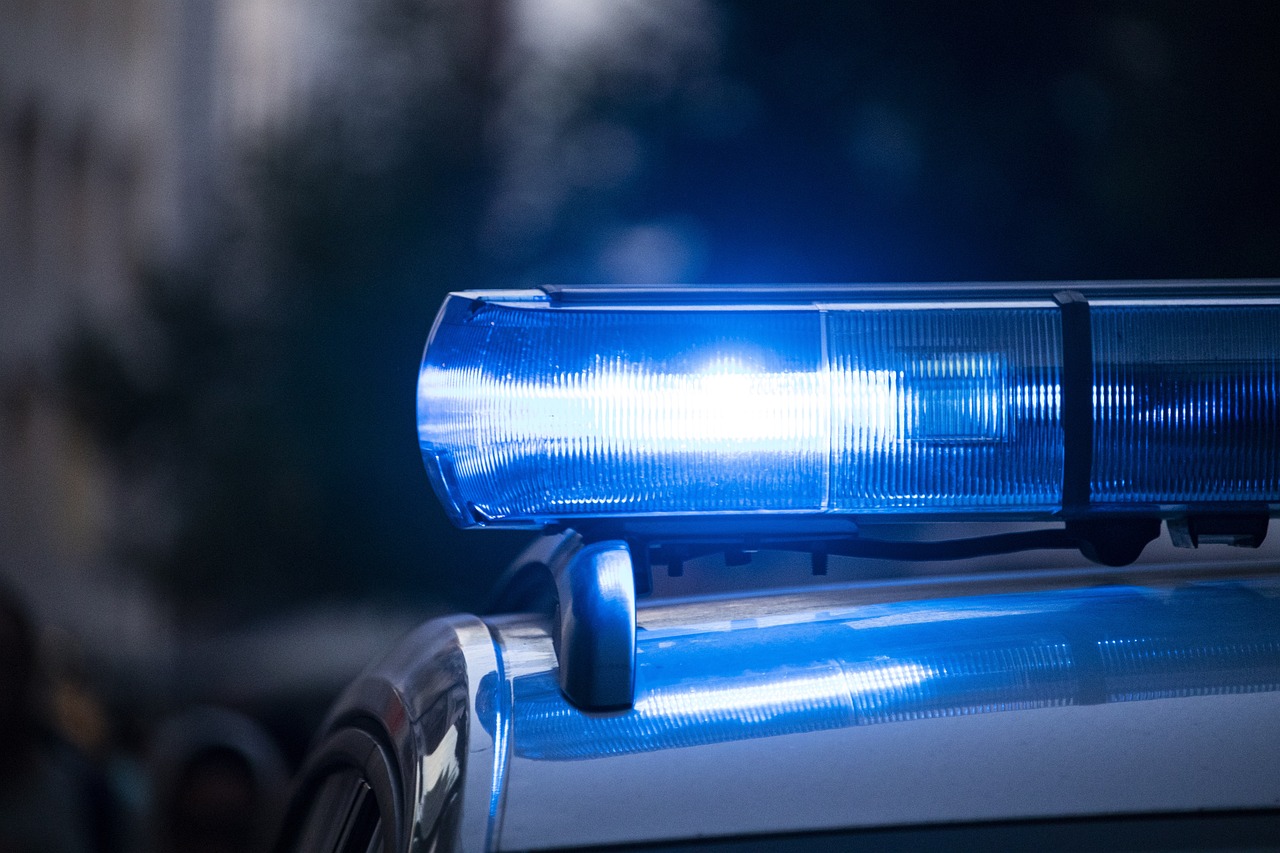
Staying Calm in Emergencies
When an emergency strikes, it can feel like the world is spinning out of control. Your heart races, your palms sweat, and suddenly, everything seems overwhelming. But what if I told you that staying calm could be your greatest asset in these situations? Just like a ship navigating through a storm, your ability to remain steady can help you steer through chaos and find safety. Here are some strategies to help you keep your cool when the heat is on.
First and foremost, it's essential to focus on your breathing. When panic sets in, our breathing often becomes rapid and shallow. This can exacerbate feelings of anxiety. Instead, try to take a few deep breaths: inhale slowly through your nose, hold it for a moment, and then exhale through your mouth. This technique not only calms your nervous system but also helps clear your mind, allowing you to think more clearly about your next steps.
Another effective method is to assess the situation calmly. Take a moment to observe your surroundings. What is happening? Are there any immediate dangers? By gathering information, you can make informed decisions rather than reacting impulsively. Think of it like a detective piecing together clues – the more information you have, the better equipped you'll be to handle the situation. For instance, if you're in a crowded area and something feels off, look for exits and safe spaces, and keep an eye on your companions.
Additionally, having a mental checklist can be a lifesaver. Consider creating a simple list of steps to follow in various emergencies, such as:
- Stay calm and breathe deeply.
- Assess the situation and identify potential dangers.
- Seek safety and help others if possible.
- Contact authorities if necessary.
This list can serve as a guide, helping you remember what to do when your mind goes blank. It's like having a map in an unfamiliar city – it gives you direction and purpose.
Moreover, practice makes perfect. Consider running through emergency scenarios in your mind or even with friends. Role-playing can be a fun way to prepare for unexpected events. By familiarizing yourself with potential situations, you're more likely to react calmly when they arise. Think of it as rehearsing for a play; the more you practice your lines, the more confident you’ll feel when it’s showtime.
Lastly, don’t underestimate the power of positive self-talk. In moments of crisis, your internal dialogue can significantly influence your emotions. Remind yourself that you can handle the situation and that it’s okay to feel scared. Phrases like "I am capable" or "I will get through this" can provide a sense of control and reassurance. It’s like having a personal cheerleader in your head, encouraging you to stay strong.
In conclusion, staying calm during emergencies is not just about managing fear; it's about empowering yourself to take action. By focusing on your breathing, assessing the situation, having a mental checklist, practicing scenarios, and engaging in positive self-talk, you can navigate through chaos with confidence. Remember, every storm eventually passes, and with the right mindset, you can weather any emergency.
Q: What should I do if I feel overwhelmed during an emergency?
A: Focus on your breathing, assess the situation, and try to remember your mental checklist. Taking a moment to calm your mind can help you regain control.
Q: How can I prepare for emergencies in advance?
A: Consider role-playing different scenarios with friends or family, and create a mental checklist of steps to take in various emergencies. Familiarity can help reduce panic.
Q: Is it helpful to have a personal safety device during emergencies?
A: Yes! Personal safety devices can provide peace of mind and help you feel more secure in public spaces. They can also serve as a tool to alert others in case of danger.
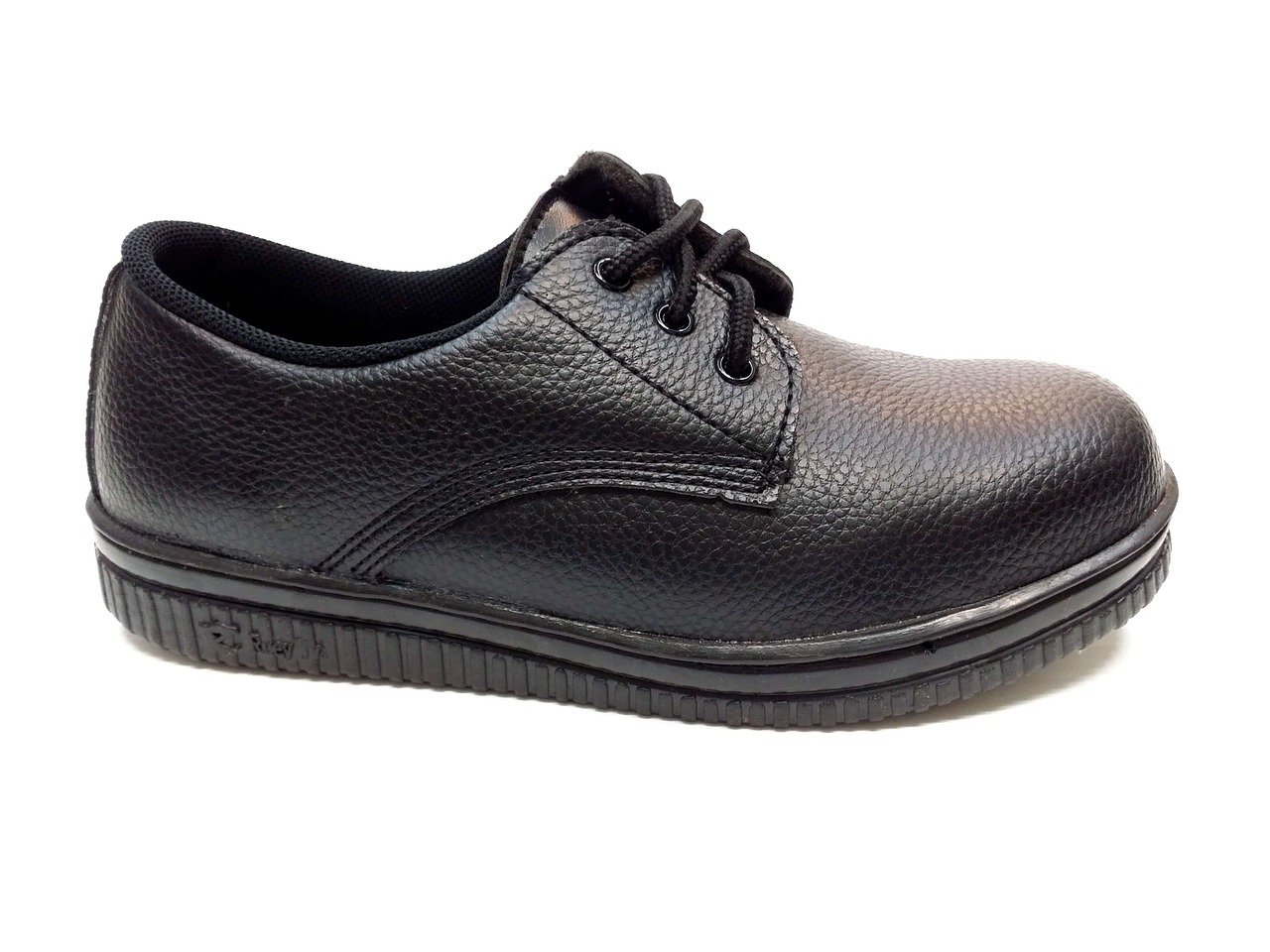
Reporting Suspicious Activity
When it comes to public safety, being vigilant and proactive is key. If you notice anything that seems out of place or suspicious, it’s crucial to report it. But what exactly does "suspicious activity" mean? It can range from someone acting erratically in a public space to individuals loitering around closed establishments at odd hours. The important takeaway here is that if it raises your eyebrows, it’s worth a second look. You might be thinking, “But what if I’m just being paranoid?” Well, it’s always better to err on the side of caution. Remember, your intuition is a powerful tool!
So, how do you go about reporting suspicious activity? First and foremost, it’s essential to remain calm and gather as much information as possible. Observe the details: what does the person look like? What are they wearing? Are there any vehicles involved? The more specific you can be, the better. You might think of it like being a detective; every little detail counts! Once you have the necessary information, you can report it to local authorities. Most communities have a non-emergency number you can call, but in case of immediate danger, don’t hesitate to dial 911.
Additionally, many public spaces, like malls and parks, have security personnel on-site. If you feel uncomfortable making a call, approach a security officer and share your concerns. They are trained to handle such situations and can take appropriate action. It’s like having a safety net right there in the environment you’re in!
To make this process easier, consider keeping a small notebook or using your smartphone to jot down any suspicious observations. This way, you can quickly reference them when reporting. Here’s a quick table summarizing what to look for and how to report it:
| Observation | Action |
|---|---|
| Person acting erratically | Note details and report to authorities |
| Loitering near closed businesses | Approach security or call non-emergency number |
| Unattended bags or packages | Inform security or call authorities |
| Strange vehicles parked in odd places | Document details and report |
Remember, reporting suspicious activity is not just about protecting yourself; it’s about looking out for your community. When you report, you contribute to a safer environment for everyone. It’s like being part of a neighborhood watch, where every member plays a role in keeping the area secure. So next time you see something that feels off, don’t hesitate—speak up!
- What should I do if I see something suspicious? Gather details and report it to local authorities or security personnel.
- Can I report anonymously? Yes, many jurisdictions allow for anonymous reporting of suspicious activity.
- What if I’m not sure if it’s suspicious? Trust your instincts; if it feels wrong, it’s worth mentioning.
- Are there any apps for reporting suspicious activity? Yes, many communities have apps or hotlines dedicated to safety reporting.
Frequently Asked Questions
- What should I do if I feel unsafe in a public place?
If you ever feel unsafe, trust your instincts. Move to a well-lit area where there are other people around. If necessary, contact local authorities or security personnel. It's always better to be cautious and seek help when needed.
- How can I improve my situational awareness?
Improving situational awareness involves being mindful of your surroundings. Try to observe the people and environment around you, and avoid distractions like your phone. Regularly scan your environment and be attentive to anything that seems out of place.
- What personal safety devices are recommended?
Some effective personal safety devices include pepper spray, personal alarms, and keychain self-defense tools. Make sure to familiarize yourself with how to use them properly and check local laws regarding their possession.
- Why is traveling in groups safer?
Traveling in groups enhances safety because there’s strength in numbers. It’s harder for potential threats to target a group, and you can look out for each other. Plus, it’s always more fun to share experiences with friends!
- What precautions should I take while using public transportation?
When using public transportation, stay alert and keep your belongings close. Avoid empty cars or bus stops, and sit near the driver or other passengers. Always have your fare ready to minimize the time you spend distracted.
- How can I secure my belongings in crowded areas?
To secure your belongings, use bags that can be zipped shut and keep them close to your body. Consider using anti-theft bags with lockable zippers and RFID protection. Be aware of pickpockets and avoid leaving items unattended.
- What are safe spaces, and how can I identify them?
Safe spaces are areas where you can seek help or refuge, such as police stations, hospitals, or well-populated public buildings. When in a public place, look for security personnel, clearly marked exits, or areas with a lot of people, which can serve as safe havens.
- How do I stay calm during an emergency?
Staying calm in an emergency is crucial. Practice deep breathing, focus on your surroundings, and try to think clearly about your next steps. Remember, panicking can cloud your judgment, so take a moment to collect yourself before acting.
- How should I report suspicious activity?
To report suspicious activity, approach a nearby authority figure like a security guard or police officer. If you can't find one, call the local emergency number and provide as much detail as possible about the situation, including descriptions and locations.




